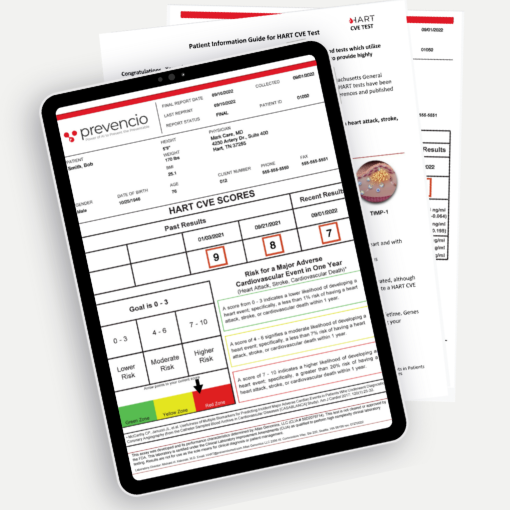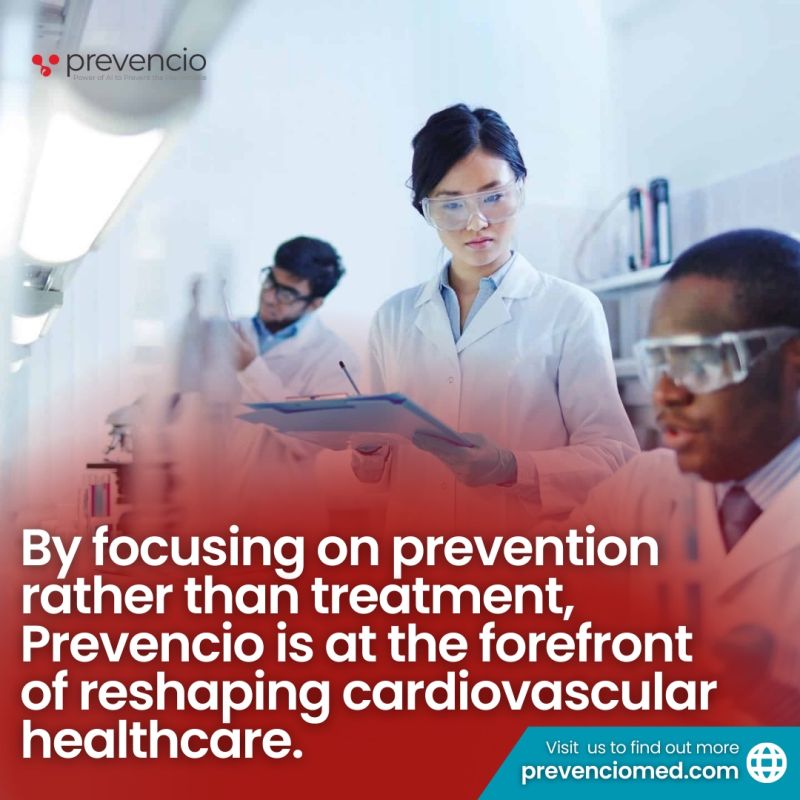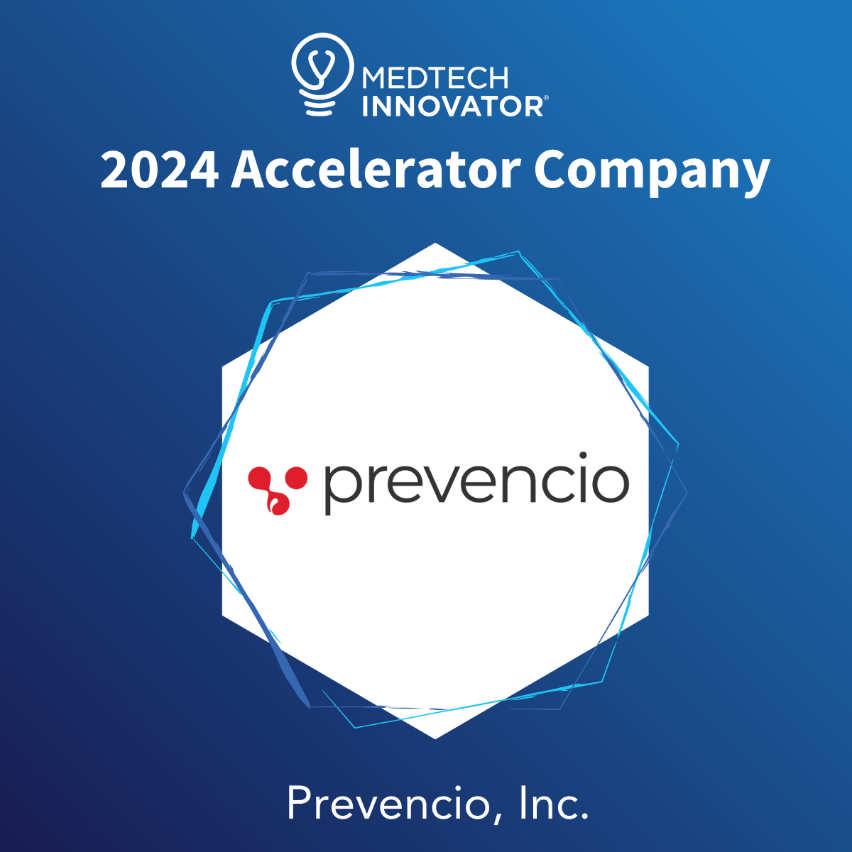Life Science Washington’s Member Spotlight series highlights the innovations, impact, and future vision of our member companies in the life sciences industry. Through curated questions, we explore their origins, breakthrough technologies, local presence, and industry leadership. This initiative showcases their contributions and strengthens connections within the life sciences community. If your organization is a member and would like to be highlighted in a future spotlight, please contact Kaitlyn Campitiello, Director of Marketing and Communications.
Tell us your origin story. How did Prevencio come to be, and what inspired its creation.

Prevencio, Inc. was a reboot of an LLC spin-out of University of Pittsburgh Medical Center. We took the original idea of creating one multiprotein blood test for heart disease and expanded it into an AI-driven, disease agnostic platform for the development of highly accurate, algorithmically combined multiprotein blood tests. Our initial focus and inspiration remain on cardiovascular disease as it is the leading cause of death in the US and worldwide. In the US, cardiovascular disease claims more lives than all cancer deaths combined; yet it is 80% preventable. There is a desperate need for more accessible (e.g. blood tests, vs. imaging), accurate, and actionable diagnostic and prognostic cardiovascular tests.
What makes Prevencio’s diagnostic and prognostic (risk) tests unique? How do they differ from existing solutions in the market?
Prevencio’s HART tests are unique in their accessibility, accuracy and safety. HART CADhs and HART CVE are the only AI-driven, multiprotein blood tests for cardiovascular disease. HART CADhs is accessible, highly accurate and safe for detection of obstructive heart disease. HART CVE is accessible, highly accurate and safe for a patient’s one year risk of heart attack, stroke, or cardiovascular death (HART CVE).
Existing solutions in the market are either: 1. imaging-based, which lack the ease and accessibility of a blood test, require radiation, attributable to 5% of all cancers, and often require kidney injurious contrast dye; 2. stress testing-based which are not as accurate and lack the ease, accessibility, and safety of a blood test; or 3. single biomarker blood tests that are not as accurate.
Can you share a real-world example of how Prevencio’s technology has improved patient outcomes or transformed diagnostic practices?
A primary care physician customer tested a “relatively healthy” patient for Prevencio’s HART CVE test for one year risk of heart attack, stroke or cardiovascular death. The patient’s HART CVE score was in the high-risk zone which alerted the primary care physician to contact the patient’s cardiologist and immediately get the patient scheduled for an invasive diagnostic heart catheterization. This invasive procedure showed a significant obstruction in the left anterior descending (LAD) coronary artery, known as the “widow maker” because obstruction in this heart artery often causes a massive heart attack and subsequent death. Because our HART CVE test alerted the physician to the patient’s condition in a timely and accurate manner, the physician was able to get immediate intervention and attests that HART CVE saved the patient’s life.
How have collaborations with regional companies such as Microsoft and providers such as Seattle Children’s changed the trajectory of the business?

Microsoft brought Prevencio in as a part of its Start Up Company program and provided early funding and cloud platform to establish our HART AI-algorithm processing, report generation and secure portal delivery in its’ Azure cloud, which we still use today for our clinical customers. Seattle Children’s Research Institute (SCRI) partnered with Prevencio to use our expertise and AI-driven HART platform to develop the first-in-class diagnostic blood test for Kawasaki disease, a childhood cardiac condition which can cause aneurysms (ballooning) of the heart arteries and premature death. The partnership allowed us to demonstrate the efficiency and accuracy of our HART AI platform in developing highly accurate, multiprotein blood tests—and, importantly, developing a much-needed diagnostic for this childhood disease.
How has the integration of artificial intelligence transformed the development of your multi-protein blood tests? What specific AI techniques or models are you leveraging to enhance diagnostic accuracy?
AI, specifically machine learning, has dramatically transformed our ability to accurately and efficiently process high-dimensional data into algorithmically combined multiprotein and clinical variable blood tests. We utilize machine learning techniques, including LARS and LASSO, to analyze thousands of proteins and clinical variables to create highly accurate, commercially viable blood tests.

What do you see as the biggest challenges facing diagnostic innovation today, and how is Prevencio working to overcome them?
Investment, regulatory, reimbursement and clinical inertia are some of the major challenges facing diagnostic innovation. Prevencio strives to be capital efficient and partner with leading researchers and institutions, key opinion leaders, and consultants to produce exemplary research and clinical data to address regulatory, reimbursement and clinical inertia.
Where do you see Prevencio in the next 5-10 years? Can you share some of your most exciting upcoming projects or innovations?

In the next 5 to 10 years, Prevencio will revolutionize cardiac diagnostics into highly accessible and accurate medical tests—specifically blood tests—assisting in the earlier identification, risk stratification and treatment of patients. We will expand from lab developed tests (LDTs) with a 2-7 day turnaround for stable outpatients into the emergency departments with a 1-hour turnaround time ideal for acute chest pain patients. Our vision is to ensure that cardiovascular disease diagnosis, risk assessment and early treatment is adequately addressed to ensure that cardiovascular disease is NOT the leading cause of death!
Learn more about Prevencio and stay updated by following their social channels:
- Prevencio’s Website: https://prevenciomed.com/
- Prevencio’s LinkedIn: https://www.linkedin.com/company/prevencio-inc./
If your organization is a member of Life Science Washington and would like to be highlighted in a future spotlight, please contact Kaitlyn Campitiello, Director of Marketing and Communications.